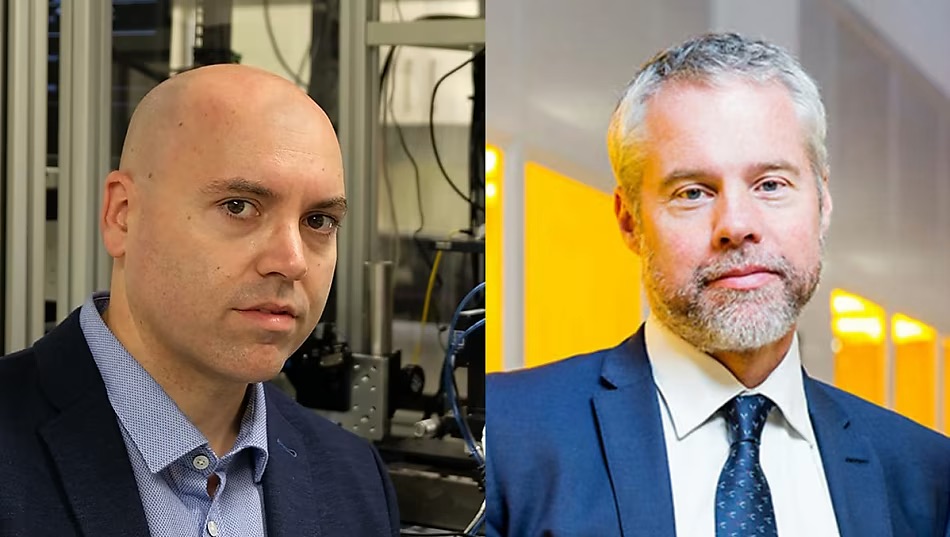Opinion: The current wars in the Middle East and Ukraine are changing the landscape of global stability and leading other countries to examine their own security, with emerging dual-use technology providing a means of securing our national interests, explain Professor Ben Eggleton and Associate Professor Sergio Leon-Saval of the NSW Smart Sensing Network.
The current wars in the Middle East and Ukraine are changing the landscape of global stability and leading other countries to examine their own security.
Australia is at risk of being drawn into conflict between China and Taiwan in the Indo-Pacific in the next 10 years.
This potential conflict could see an adversary launch an incursion in Australia’s north-west shelf or parts of its exclusive economic zone.
Another security threat facing Australia are compounding natural disasters due to climate change. Australia is bracing itself for another vicious bushfire season just as we clean up from devastating floods that swept through northern NSW in early 2022.
These two threats might have little in common. However, both require new, more sophisticated means of understanding the threats and a sharper awareness of the situation around us to protect and enhance our national resilience.
A smart sensing for Australian Resilience Cooperative Research Centre which focuses on multi-disaster capabilities through situational awareness can help both the defence and natural hazards spheres.
Agencies – be they military or civil – require enhanced situational awareness: rich data that provides a full and accurate assessment in real-time of the threat, which provides the intelligence to mount a suitable response and empowers individuals to take action and be in control of their own destiny.
Critical to situational awareness is technology and central to such technologies is smart sensing.
A sensor is a device that can detect, diagnose, monitor, and respond to the world around it – including light, heat, motion, moisture, pressure – allowing pre-emptive and predictive responses in a vast range of settings.
Sensors are already part of our daily lives. They are used in everyday objects such as smartphones and fitness trackers where they help to measure how many steps we’ve walked or calculate our heart rate.
But it is the next generation of sensors – smart sensors, connected onto the cloud with advanced edge compute enabled by breathtaking computational power in semiconductor chips – that will help us face big key challenges and change the way we live.
Smart sensing is already driving the automation, artificial intelligence, and robotics that will revolutionise the way we grow food, generate energy, and make things.
For the last seven years, our organisation, the NSW Smart Sensing Network, has provided smart solutions in areas such as energy, resources, manufacturing, the environment, transport, agriculture, space, and health.
We’ve helped the government save water by detecting future leaky pipes; assisted NSW councils to inform their communities about air pollution; and are helping our elderly stay out of care and in their homes longer.
But smart sensing is increasingly being used by the military to help defend our borders – by sea, land, sky, and increasingly, by space.
The use of arrays of smart sensors – which are listening, looking, giving a position via radar, for example – could give our military an advantage by providing supreme situational awareness: the ability to comprehend the environment, anticipate threats, and respond decisively.
A battlefield of thousands of kilometres wide and altitude of hundreds of kilometres could be monitored in real time via sensors on satellites, ships, towers, radar, acoustic surveys, and airplanes.
This innovative technology can help a military detect threats and has evolved to such an extent where we now have the capability to pinpoint a flying bullet.
Situational awareness can help a military understand where a threat is, how severe it is, where it is heading and make better decisions on how to prioritise resources, including the evacuation of our citizens and the deployment of responders.
The same technology has a dual-purpose opportunity in that it can also help Australia deal with compounding natural disasters due to climate change and is an opportunity for Australian industry to diversify and leverage across these sectors.
Using sensors to increase our situational awareness about a disaster, agencies can detect a flood or fire in minutes and mobilise firefighters or responders in real time.
Smart sensor technology can understand fuel loads on the ground: important information that can help us predict the movement and intensity of a bushfire.
These sensors on buildings can detect structures at risk, identify where affected people are, and give information on the state of transportation and communications.
That’s why we are championing a bid to establish a smart sensing for Australian Resilience Cooperative Research Centre: to become a national platform that can integrate across the smart sensor ecosystem to address these emerging threats and enable decision superiority.
Superior decision-making allows our “combat forces” to achieve and retain the initiative, which is a fundamental premise of all successful actions to strengthen national security and national hazards resilience.
We are bringing together businesses, researchers, and government agencies across both the defence and natural hazards sectors, to identify the gaps in our technological capability, share information, and push the boundaries of scientific discovery.
The conversation is being led by industry and government and, in response, we are harnessing the greatest minds in Australia to develop the next generation of smart sensing technology for Australia’s resilience.
By: Benjamin Eggleton
